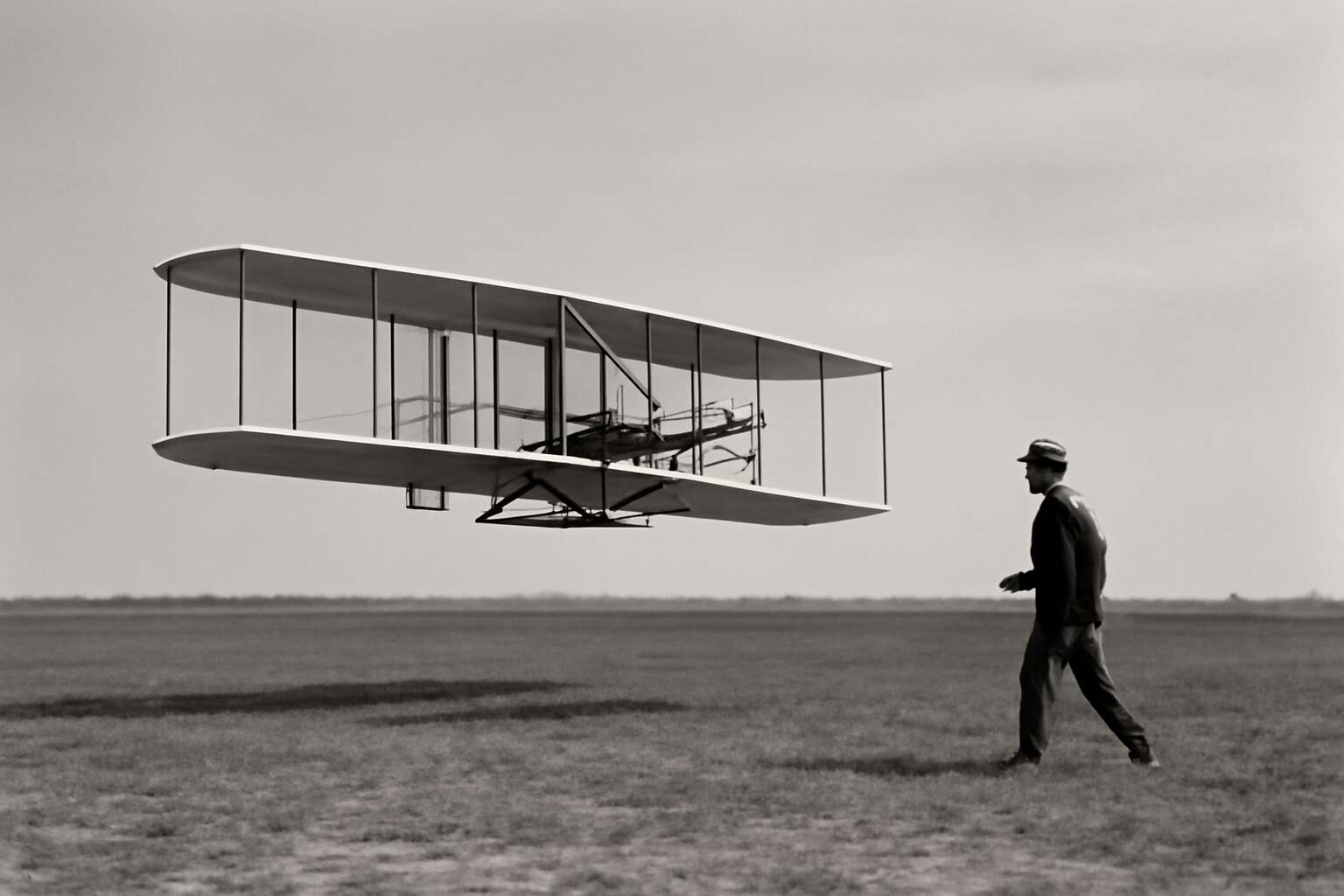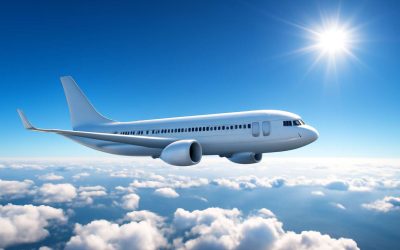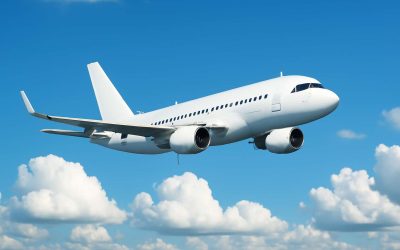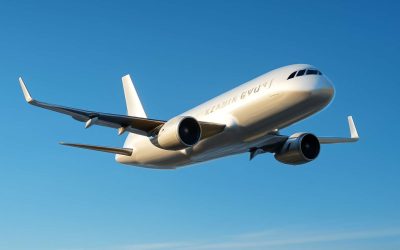Early Flight Pioneers and The Birth of Aeroplanes
The Wright Brothers and the First Powered Flight – Details about Orville and Wilbur Wright’s pioneering achievement in 1903
In the grand tapestry of aeroplanes history, few moments shimmer as brightly as the dawn of powered flight. Before that groundbreaking day in 1903, dreams of soaring through the heavens were mere whispers in the minds of visionaries. Among these pioneers, the Wright Brothers stand as luminous figures—craftsmen of possibility and architects of a new era. Their relentless pursuit of flight culminated in a marvel of ingenuity: the first successful powered airplane.
On December 17, 1903, in the windswept sands of Kitty Hawk, Orville and Wilbur Wright achieved what had once seemed impossible. With their aircraft, the Flyer, they defied gravity for 12 seconds, covering a distance of just 36.5 meters. Yet, this modest flight marked a seismic shift in aeroplanes history, igniting a passion that would propel humanity toward the skies. Their achievement wasn’t just about technology; it was a poetic leap into the boundless potential of human ingenuity.
Reflecting on this milestone, it’s fascinating to see how these early flights laid the groundwork for the vast and intricate world of aeroplane technology today. From that first fragile lift-off, the evolution of aeroplanes has been a relentless pursuit of excellence, driven by pioneers inspired by dreams of flight and the unyielding human spirit. Truly, the story of the Wright Brothers is woven deeply into the fabric of aeroplanes history—a testament to what we can achieve when we dare to dream beyond the horizon.
Pre-Wright Aviation Experiments – Early inventors and inventing efforts leading up to powered flight
Before the Wright Brothers took to the skies, countless inventors and pioneers dared to challenge the limits of human flight. These early flight experiments, often fueled by curiosity and a relentless drive for innovation, laid the crucial groundwork for what would become the fascinating history of aeroplanes. From gliders to experimental powered aircraft, each attempt added a layer of knowledge, inching closer to humanity’s dream of conquering the skies.
Among these pioneers, names like Sir George Cayley and Otto Lilienthal stand out. Cayley, often called the “father of aeronautics,” envisioned fixed-wing aircraft long before powered flight was possible. Lilienthal’s glider experiments in the late 19th century demonstrated the potential of wings and controlled flight. Their efforts, along with others, created a fertile ground for the revolutionary breakthroughs that would follow.
In this era of relentless experimentation, the focus was on understanding lift, stability, and control. Some early inventors used simple materials and rudimentary designs, yet their determination was extraordinary. As a result, the foundation for future aeroplanes history was solidified—each experiment, each flight attempt, a testament to human ingenuity and the unyielding quest to soar beyond the horizon.
Key Inventors and Innovators – Other notable figures influencing aeroplane development
Before the iconic flights of the Wright Brothers etched their name into the annals of aeroplanes history, daring pioneers tirelessly experimented with flight concepts that would eventually propel humanity skyward. These early visionaries, often working with rudimentary materials and a dash of audacity, laid a foundation so vital that it still underpins modern aeroplanes development today.
Among the notable figures influencing aeroplanes history, Sir George Cayley stands out as the true architect of the modern aeroplane. His meticulous studies on lift, stability, and the mechanics of flight prefigured the revolutionary breakthroughs to come. Otto Lilienthal, the “birdman” of Germany, further advanced this pioneering spirit with his pioneering glider experiments—each flight a testament to human curiosity and perseverance.
- Discovering the principles of controlled flight
- Refining wing design for better lift
- Understanding the importance of balance and stability
These inventors, among others, created a fertile ground that allowed subsequent innovators to build upon their discoveries. Their relentless experimentation, often conducted with makeshift tools and a stubborn optimism, transformed the dream of human flight from fanciful speculation into tangible reality—an enduring chapter in the captivating aeroplanes history that continues to inspire generations of aviators and engineers alike.
Evolution of Aeroplane Technology
Advancements in Aircraft Design – Progression from biplanes to monoplanes
The evolution of aeroplane technology is a testament to human ingenuity and relentless pursuit of freedom in the skies. From the fragile biplanes of the early 20th century to the sleek, efficient monoplanes of today, each leap forward has redefined our understanding of flight. The progression in aircraft design reflects a continuous quest for speed, safety, and endurance—elements that have transformed aeroplanes history into a saga of dreams taking shape.
Initially, biplanes with their double wings dominated the horizon, offering stability but limited in speed and aerodynamic efficiency. Over time, engineers and inventors recognized the need to streamline aircraft structures, leading to the advent of monoplanes. These single-wing marvels drastically reduced drag, enabling faster and more fuel-efficient flights. Advancements such as reinforced fuselages, jet propulsion, and composite materials have propelled aeroplanes into an era where long-haul journeys are routine and luxury is woven into every mile.
- Increased aerodynamic efficiency
- Introduction of jet engines
- Use of lightweight composite materials
- Enhanced safety and navigation systems
Introduction of Jet Engines – Transformational shift in aircraft propulsion technology
The introduction of jet engines marked a monumental turning point in the aeroplanes history. Unlike the piston engines of early aircraft, jet propulsion offered unprecedented power and efficiency, transforming the way humans traverse the skies. This innovation allowed for aircraft to reach higher speeds and altitudes, shrinking the world and making distant continents accessible within hours. The sleek silhouette of modern jets stands as a testament to this leap forward, embodying decades of relentless engineering pursuit.
Jet engines also revolutionized commercial aviation, making long-haul flights more practical and economical. They ushered in an era where luxury and convenience became integral to air travel, connecting South Africa to the rest of the world like never before. This leap in aircraft propulsion technology is a cornerstone of the aeroplanes history, highlighting humanity’s unyielding desire to soar higher and farther. As we look back, the evolution of aeroplanes reminds us that each technological breakthrough is a tribute to human resilience and innovation.
Materials and Manufacturing – Use of lightweight metals and composites
Throughout the fascinating tapestry of aeroplanes history, one element stands out as a silent but mighty catalyst for progress: the evolution of aircraft materials and manufacturing techniques. Early models relied heavily on wood and fabric, fragile and fleeting in the face of technological ambition. Yet, as the quest for efficiency and safety intensified, engineers turned to lightweight metals, transforming the very essence of aircraft construction. Aluminum, with its remarkable strength-to-weight ratio, emerged as the backbone of modern aircraft design, reducing weight without sacrificing integrity.
As aeroplanes history unfolded, the advent of composites—advanced materials woven with carbon fibers and reinforced plastics—revolutionized manufacturing. These composites enable sleek, aerodynamic profiles while dramatically decreasing weight, unlocking new heights of speed and fuel efficiency. For those who cherish innovation, the use of lightweight metals and composites exemplifies how material science propels the industry forward. Here is a snapshot of the key advancements:
- Transition from traditional wood and fabric to durable metals like aluminum.
- Integration of composite materials to enhance aerodynamics and reduce weight.
- Implementation of cutting-edge manufacturing processes, such as precision machining and automated assembly.
Each leap in material technology has been a testament to human ingenuity, shaping the aeroplanes of tomorrow and rewriting the very narrative of aeroplanes history. These innovations breathe life into the sleek silhouettes soaring across South African skies and beyond, embodying the relentless pursuit of progress that defines our journey through the skies.
Major Milestones in Aeroplane History
World War I and the Role of Aircraft – Military applications and advancements during the war
The aeroplanes history took a dramatic turn during World War I, transforming from basic reconnaissance tools into formidable military assets. The skies became a new battlefield, where aircraft evolved rapidly to meet the demands of modern warfare. The introduction of fighter planes and bombers revolutionized combat strategies, making air superiority a crucial element of military success. Advancements in aeroplane technology during this period included improved aerodynamics, faster engines, and more durable materials, all aimed at gaining an edge over opponents.
Military applications during the war pushed the boundaries of what aeroplanes could achieve. Innovations such as synchronized machine guns allowed pilots to shoot through the spinning propeller without damaging it — a breakthrough that significantly increased combat effectiveness. The race for aerial dominance led to a flurry of advancements, including:
- Enhanced speed and agility in fighter aircraft
- Development of long-range bombers
- Introduction of aerial reconnaissance and strategic bombing
These milestones laid the groundwork for future aviation breakthroughs, forever changing the aeroplanes history and the landscape of modern warfare. The war’s impact on aeroplane development remains a testament to how conflict accelerates technological progress, shaping the aircraft we see today.
The Golden Age of Aviation – Innovations and record-breaking feats of the 1920s and 1930s
The 1920s and 1930s heralded an extraordinary chapter in the aeroplanes history, often dubbed the Golden Age of Aviation. It was an era where dreams took flight and human ingenuity soared to unprecedented heights. During this period, aircraft innovation was relentless, and record-breaking feats became commonplace, capturing imaginations worldwide.
Pilots and engineers pushed the boundaries of possibility, setting records for speed, altitude, and distance. This relentless pursuit of excellence led to the birth of sleek, streamlined aircraft that seemed almost mythical in their grace and power. Notable milestones include the first nonstop transatlantic flight and the development of commercial passenger planes that made global travel more accessible than ever before.
Some of the most remarkable advances in the aeroplanes history include:
- Introduction of pressurized cabins for high-altitude flight
- Development of the iconic monoplane design, replacing the traditional biplane
- Breakthroughs in navigation and instrumentation, paving the way for safer, more reliable flights
The innovations of this era not only transformed aviation but also laid the foundation for modern aircraft technology, making the skies more accessible and inspiring dreams of exploration that continue to propel us forward today.
The Jet Age and Commercial Aviation – Rise of airline travel and jet-powered airliners
The rise of airline travel and jet-powered airliners marked a pivotal chapter in the aeroplanes history, transforming how humanity perceives distance and connection. In the mid-20th century, the advent of jet engines shattered previous limitations, enabling aircraft to fly faster, higher, and more efficiently than ever before. This technological leap wasn’t just about speed; it redefined global mobility, shrinking continents into accessible corridors of commerce and culture.
The introduction of commercial jetliners, such as the Boeing 707 and the Douglas DC-8, revolutionized the airline industry. These aircraft made it possible for millions of people worldwide to experience international travel, fostering a new era of globalization. The emergence of scheduled airline services laid the foundation for the modern airline industry, characterized by unprecedented safety, comfort, and frequency.
As jet technology matured, innovations in materials and aerodynamics further enhanced aircraft performance. Today, the aeroplanes history continues to evolve with advancements in fuel efficiency and eco-friendly designs, but the legacy of the jet age remains a testament to human ingenuity. The ascent of airline travel, fueled by jet-powered airliners, is arguably one of the most profound milestones in aeroplanes history, connecting lives and shaping destinies across the globe.
Impact of Aeroplanes on Society and Economy
Global Connectivity – How aircraft revolutionized travel and trade
The advent of aeroplanes has woven an invisible thread that connects distant corners of the world, transforming the very fabric of society and economy. With each soaring flight, the boundaries of time and space diminish, ushering in an era where global connectivity is no longer a distant dream but an everyday reality. The impact of aeroplanes history extends beyond mere transportation; it has revolutionized trade, diplomacy, and cultural exchange, creating a tapestry of interconnected communities.
From bustling international airports to remote villages, aeroplanes have propelled economic growth by facilitating swift movement of goods and people. This rapid transit has enabled industries to thrive and markets to expand beyond borders. The ripple effect is palpable: tourism flourishes as travelers explore new horizons, while businesses benefit from faster supply chains. As the story of aeroplanes history continues to unfold, its role as a catalyst for global integration remains undeniable.
Economic Growth and Job Creation – Aviation industry impact on global economies
The impact of aeroplanes on society and the economy is nothing short of revolutionary. As the backbone of global connectivity, the aviation industry has become a catalyst for economic growth and job creation worldwide, including in South Africa. The aeroplanes history reveals a story of relentless innovation that has transformed the way we live, work, and interact. Today, the aviation sector contributes significantly to the gross domestic product (GDP) of nations and sustains millions of jobs, from airline personnel to manufacturing specialists.
Furthermore, the economic ripple effects extend beyond employment. The rapid movement of goods and people accelerates trade and fosters cultural exchange, enriching societies and bolstering diplomatic ties. In many emerging markets, including South Africa, the growth of the aviation industry has opened new avenues for tourism, investment, and development. The aeroplanes history underscores a relentless pursuit of progress—each technological leap fueling an interconnected world. It is this unyielding drive that continues to shape our global economy and societal fabric, making aviation an indelible part of our collective future.
Cultural and Social Changes – Shaping modern lifestyles and global awareness
The advent of aeroplanes has profoundly reshaped societies worldwide, including South Africa, transforming the way we perceive distance and connection. The aeroplanes history is a testament to human ingenuity, serving as a catalyst for cultural exchange and social evolution. With every new technological leap, communities become more interconnected, fostering understanding and collaboration across borders.
From bustling international airports to remote regional hubs, modern lifestyles are intertwined with the capabilities of advanced aircraft. These innovations have not only accelerated travel but also enriched societies by enabling access to diverse cultures, ideas, and opportunities. The aeroplanes history underscores a relentless pursuit of progress that continues to redefine what is possible in our interconnected world.
Future of Aeroplanes and Emerging Technologies
Electric and Sustainable Aircraft – Development of eco-friendly flying options
The future of aeroplanes history is poised on the cusp of revolutionary change, driven by emergent technologies that promise to redefine our perceptions of flight. Electric and sustainable aircraft are no longer mere concepts—they are rapidly transitioning from experimental prototypes to tangible realities. As environmental concerns intensify, the development of eco-friendly flying options becomes paramount, compelling industry stakeholders to innovate beyond traditional paradigms.
Emerging advancements in electric propulsion systems, combined with sustainable materials, are paving the way for quieter, more efficient aircraft that significantly reduce carbon footprints. Companies worldwide are investing in the research of lightweight composites and alternative fuels, aiming to transform commercial aviation into a more environmentally responsible enterprise. The integration of artificial intelligence and automation further enhances safety and operational efficiency, heralding a new era where flying is not only faster but also greener.
- Battery technology improvements for longer flight ranges
- Use of biofuels and synthetic fuels to lower emissions
- Development of hybrid-electric aircraft for regional travel
As we continue to explore the vast potential of sustainable aviation, it’s clear that the aeroplanes history will be forever shaped by these innovations—propelling us toward a future where the skies are cleaner, and flight remains a testament to human ingenuity and resilience.
Autonomous and AI-powered Flights – Automation in aviation
As the horizon of aeroplanes history unfolds, the future of aviation gleams with unprecedented promise. Emerging technologies, especially autonomous and AI-powered flights, are transforming the way we perceive the skies. These innovations are not just about convenience but herald a new era of safety, efficiency, and sustainability. Imagine aircraft that can navigate complex weather patterns or avoid turbulence autonomously—this is no longer science fiction but an imminent reality.
Artificial intelligence, when integrated into flight control systems, enhances decision-making processes in real-time. This leap forward in automation means fewer human errors and smoother journeys. The advent of autonomous aircraft also paves the way for reduced pilot fatigue and increased operational precision. For regions like South Africa, where connectivity is vital, these advancements could revolutionize regional travel and cargo logistics.
- Enhanced safety protocols through machine learning algorithms;
- Reduced operational costs with optimized flight paths;
- Increased accessibility to remote areas via autonomous regional aircraft.
While the aeroplanes history is dotted with remarkable milestones—from the pioneering flights of the early 20th century to the jet age—the current trajectory points toward a future where automation and AI are woven into the very fabric of flight. This evolution not only promises to redefine efficiency but also ensures that the skies remain a realm of endless discovery and resilience.
Next-Generation Aircraft Designs – Innovations like urban air mobility and supersonic flights
The future of aeroplanes is unfolding at a breathtaking pace, driven by groundbreaking innovations like urban air mobility and supersonic flights. Imagine zipping through city skies in a sleek, electric air taxi—this is no longer a distant dream but an emerging reality, especially for rapidly developing regions like South Africa. These next-generation aircraft designs promise to revolutionize regional travel, making previously inaccessible areas reachable in record time.
Supersonic jets, once confined to science fiction, are making a comeback with advanced materials and propulsion systems that cut flight times drastically. Meanwhile, urban air mobility is transforming congested city landscapes into bustling hubs of aerial infrastructure, reducing ground traffic and pollution. These innovations are fueled by a surge of technological progress, including lightweight composites and sustainable power sources. As we look to the horizon, it’s clear that aeroplanes history continues to evolve, opening new chapters of efficiency and environmental consciousness.
- Enhanced aerodynamics for faster, quieter flights
- Electric propulsion systems reducing carbon footprints
- Smart aircraft with integrated AI for optimal navigation
Every step forward in aeroplanes history reflects humanity’s relentless pursuit of progress—turning bold ideas into tangible milestones that shape our world. The sky is no longer the limit; it’s just the beginning of a new era of aviation innovation.




0 Comments